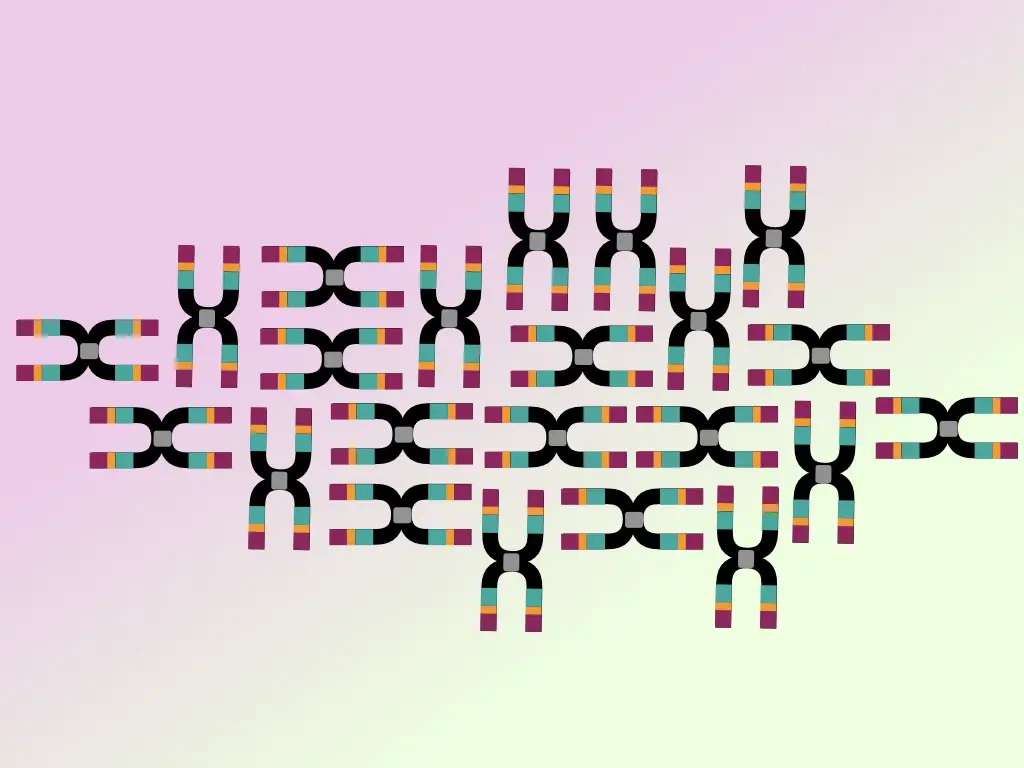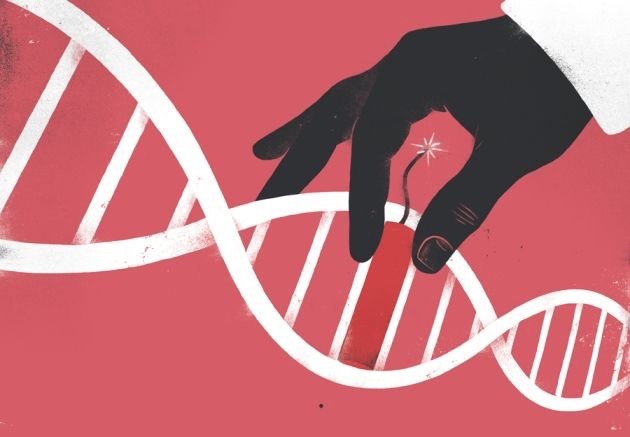“DNA precipitation, spin-column, magnetic beads, automated extractor and chromatography are several types of DNA purification techniques. Learn about the importance and techniques of DNA purification in this article.”
DNA- Deoxyribonucleic acid is a crucial molecule for life on earth and determines an organism’s traits (characteristics) and function. DNA testing has revolutionized various fields including, disease diagnosis, forensics, biotechnology, microbiology and agriculture.
DNA alterations can be analyzed at a sequence level from the samples which eventually helps understanding the sequence or gene. However, before conducting any DNA testing experiment, DNA extraction is mandatory.
DNA extraction is a process of isolating DNA from a biological sample. At a technical level, isolation alone isn’t sufficient. The DNA must be purified before being used in any downstream applications.
In this article, we will understand the importance and different techniques of DNA purification.
Stay tuned.
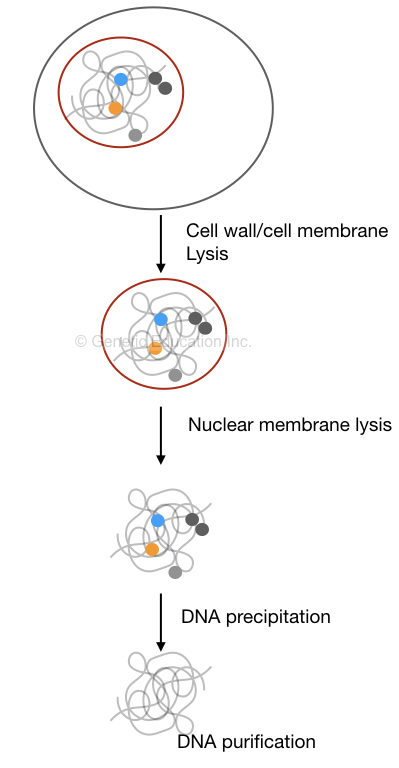
Key Topics:
What is DNA purification?
DNA purification, a fundamental laboratory procedure, revolves around the isolation and separation of DNA molecules from a cell as well as from other contaminants. The primary objective of DNA purification is to obtain exceptionally pure DNA samples, devoid of proteins, RNA, lipids, and other impurities.
Put simply, DNA purification is a process to purify or separate DNA from other cellular debris and chemicals. We can consider DNA purification as a crucial sub-step of any DNA extraction experiment.
A highly pure DNA should have a purity of ~1.80 at 260/280 nm wavelength. A DNA sample having such sufficient purity can only be used in downstream processes like PCR, DNA sequencing, genetic engineering or gene therapy.
The purity of DNA can be evaluated using spectroscopy or agarose gel electrophoresis. However, only spectroscopy can give us accurate data of purity. Now the question is!
Why do we need to purify the DNA?
Impurity (or contamination) is the biggest problem with any genetic experiment. It leads to false positives, false negatives or no results. Such conditions are very difficult to understand and overcome.
Thus we need a highly pure DNA for our experiment. Here are some of the reasons why we need to purify the DNA.
DNA purification allows precise and accurate analysis. Impurities like protein, RNA or other cellular parts often create problems during the reaction, for example during PCR or DNA sequencing reactions. Purified DNA increases the accuracy thereby the sensitivity of the experiment.
Purification helps prevent contamination. The lab environment is highly prone to contamination. Our sample DNA can easily be contaminated with foreign and/or unwanted DNA fragments. Purification reduces the chances of DNA contamination.
DNA purification also helps maintain the integrity of the DNA. DNA integrity is also a crucial factor in achieving success in downstream applications. Fragmented DNA is useless. Purification removes contaminants, chemicals or other debris that can potentially affect the integrity of the DNA.
Purified DNA ensures consistency and reproducibility in the experiment. Impurities cause problems in results and make the entire experiment inconsistent. Impurities decrease experimental reproducibility, thus purification is pivotal.
DNA purification also helps uplift enzyme activities. Several impurities can affect the activities of enzymes, for instance, Taq DNA polymerase in PCR or DNA sequencing. Chemical traces reduce the catalytic power of enzymes. Thus, to achieve high enzymatic action, purified DNA is needed.
Purified DNA samples can be stored for a longer period of time. It is estimated that a highly pure DNA sample can be stored for more than 100 years. Impurities, as aforesaid, decrease DNA integrity and shelf life.
So these are some of the crucial benefits of purifying the DNA. Now, we will move ahead and discuss some of the common techniques that we can use to purify the DNA.
Techniques for DNA purification:
Alcohol precipitation, Spin-column, Agarose gel, chemical treatment, and Column chromatography are common techniques, routinely used in genetic labs for DNA purification.
Alcohol precipitation:
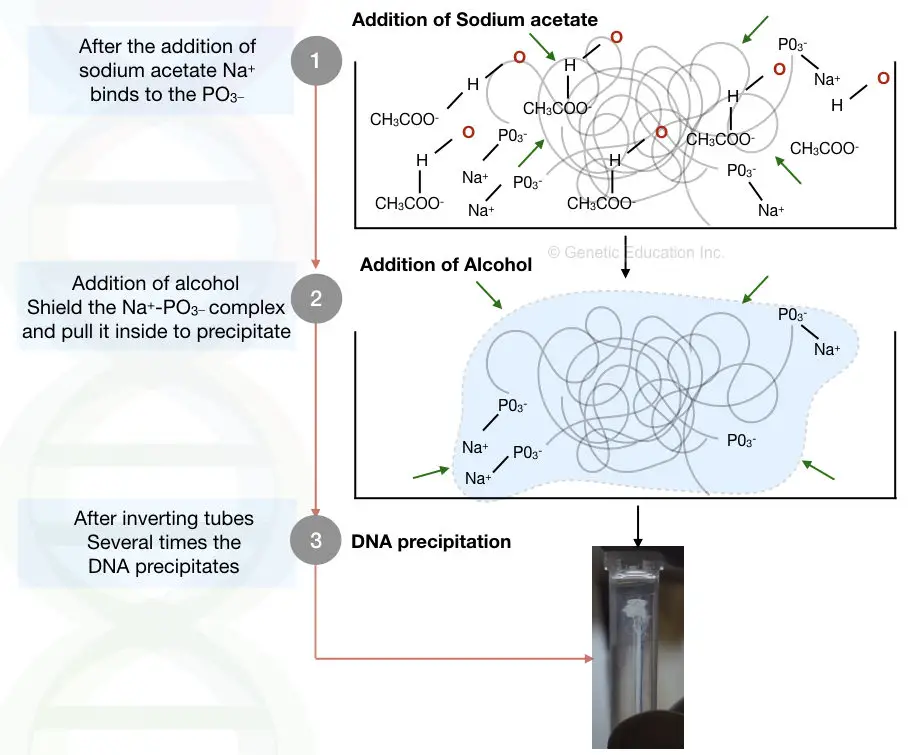
Alcohol precipitation is the best and most common DNA purification technique. Alcohol precipitates the DNA and removes impurities effectively. Methanol, ethanol and isopropanol are common alcohols used for DNA precipitation.
Alcohol precipitation provides highly pure and high-yield DNA. The precipitation technique is quite popular. I wrote an article on this topic, you can read it to learn more.
Related article: A Quick Guide on DNA Precipitation and DNA Precipitation Protocol.
| Advantages | Limitations |
| Simple, cost-effective, accurate and effective. | Not give good results for plasmid or library purification. Low-abundant DNA can’t be recovered effectively. |
Spin-column DNA purification:

Spin-column, often known as silica gel-based column purification, is a kit-based assay, commonly used in genetic labs nowadays. It’s a simple, effective and faster technique for DNA purification.
It relies on the binding of DNA to silica gel particles in the presence of a high-salt buffer. After washing the contaminants, the purified DNA can be eluted into the elution buffer.
For instance, ready-to-use kits like spin columns or magnetic beads are now available for robust DNA purification. To understand the whole concept and process of spin-column and magnetic-bead-based purification. Read these two articles.
- Advantages and Limitations of Spin-Column DNA Extraction Technique.
- DNA Extraction using Magnetic Beads.
Both techniques are capable enough to provide high yield and highly pure DNA. Advantages Limitations Easy, quick, effective and standardized.
Used for library and plasmid DNA purification.Costly.
DNA yield is moderate.
Column Chromatography:
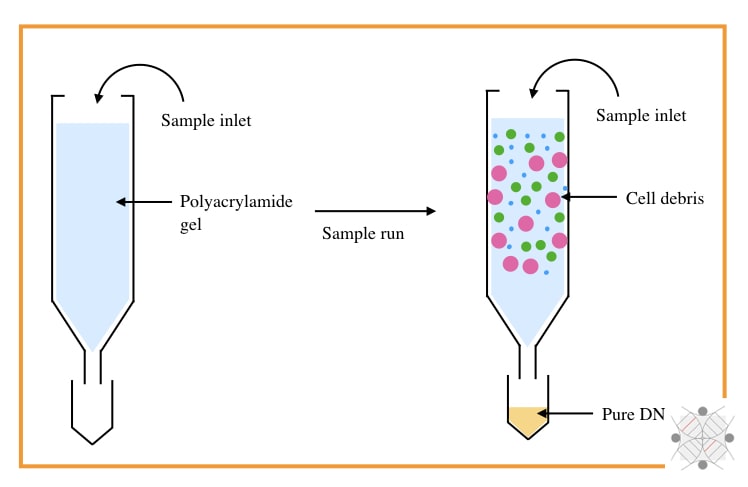
Column chromatography is a conventional and we can say, old-school but effective DNA purification technique. Two common chromatography techniques used here are gel filtration and ion exchange.
Put simply, column chromatography creates size and charge differences between the DNA and contaminants and isolates pure DNA in the elution. Despite having high yield and purity, the present technique is time-consuming and tedious.
| Advantages | Limitations |
| High yield and high pure DNA. | Time-consuming and tedious. |
Automated DNA purification:

Automated DNA purification is a type of solid-phase DNA purification. Here technically, the whole purification experiment is performed by an automated robot. Thus, it’s more effective, time-saving and robust.
Here, DNA binds with the solid phase or cartridge and is purified after the series of washing steps performed by the robotic arm. One of the major advantages of automation in DNA purification is that it can purify many samples simultaneously in a single run. Henceforth, is the best choice for high-throughput experiments.
Note that automated systems extract as well as purify DNA in a single run.
| Advantages | Limitations |
| Fast, accurate, robust, and time-saving. Can handle many samples. | Costly. |
Agarose gel electrophoresis:
Yet another common technique used for DNA purification is the gel electrophoresis. It’s important to note that the present technique is used to purify the PCR amplicons. Not for genomic DNA.
The amplicon is run on a standard agarose gel which separates the fragments based on their charges and migration rate in the gel. At the end of the run, purified DNA can be isolated by cutting and processing the gel part.
So these are some common and important techniques that we can use to purify the DNA.
Summary:Technique Principle Purity Yield DNA precipitation Precipitate and purify the DNA High High Spin-column DNA binding and elution in a high salt concentration solution. High Moderate Column Chromatography DNA column binding and elution. Good High Automated DNA purification Purification by an automated robot Good Moderate Agarose gel-based DNA purification DNA separation based on charge and molecular mass. High Moderate
Genomic DNA purification:
The genomic DNA purification process is a basic process in molecular genetics. Alcohol precipitation is the best method for genomic DNA purification, however, spin-column and magnetic bead-based techniques are also used nowadays.
The simplest process is explained here.
- Collect the nucleic acid elute using any DNA extraction method and precipitate using the doubled volume of chilled ethanol.
- Now invert the tube many times to prepare DNA precipitate.
- Centrifuge the precipitate at high-speed centrifugation and remove the alcohol.
- Add 1 ml alcohol to the tube and wash the precipitate two or three times followed by high-speed centrifugation.
- Dissolve DNA precipitate in the buffer.
If you want to use a ready-to-use kit that saves time and provides precision. Here are recommendations from my side.
- Qiagen DNeasy Blood & Tissue Kit: This kit is suitable for a wide range of sample types, including cells, tissues, and blood. It uses silica columns for DNA binding. It’s highly reliable.
- Zymo Research Quick-DNA Kits: Zymo Research provides a range of DNA purification kits, including kits for DNA from cells, tissues, and even challenging samples like faeces or plants. This kit is capable enough to purify the DNA from a wide variety of samples.
- MagMAX DNA Multi-Sample Ultra Kit: This kit by Thermo Fisher Scientific is designed for automated DNA purification using magnetic beads. It’s suitable for high-throughput applications.
- Thermo Fisher Scientific GeneJET Genomic DNA Purification Kit: This kit offers a quick and efficient DNA purification process.
- Omega Bio-tek E.Z.N.A. DNA Kits: Omega Bio-tek offers a range of DNA purification kits for different starting materials, including tissues, cells, and blood. Their kits are known for their ease of use and yielding high-quality DNA.
Plasmid DNA purification:
Purified plasmid DNA is crucial for experiments like genetic engineering, rDNA, gene therapy, gene cloning and transformation. However, obtaining high-quality plasmid DNA is a tedious process.
Manual methods like alcohol precipitation can’t give us enough purified plasmid DNA and thus we have to use some high end ready-to-use DNA Purification kits. Here is the kit recommendation for plasmid DNA purification.
- Qiagen Plasmid Mini Kits: QIAprepr, QIAquick and Plasmid Plus are some popular kits from the Qiagene used for plasmid purification. Quigen is known for its high yields and purity.
- Thermo Fisher Scientific GeneJET Plasmid Miniprep Kit: This kit provides a rapid and efficient method for plasmid DNA purification. It is suitable for small-scale purifications and delivers high-quality DNA.
- Zymo Research ZR Plasmid Miniprep-Classic Kit: Zymo Research offers a cost-effective plasmid DNA purification kit with a simple and quick protocol. It is suitable for small to medium-scale purifications.
- Promega Wizard Plus SV Minipreps DNA Purification System: Promega’s kit is designed for fast and reliable plasmid DNA purification. It includes a unique resin-based purification column for high yields and purity.
Wrapping up:
DNA purification is as important as isolating the DNA. The quality of the isolated DNA can directly impact the efficiency, accuracy, reproducibility and precision of the experiment.
Nonetheless, DNA purification isn’t rocket science to perform. A simple alcohol precipitation method can almost do the job! However, for critical and crucial experiments, I strongly recommend using good-quality and high-standard DNA purification kits.
I hope you like this article. If you want to learn more about DNA isolation. You can read our previous article as well: Different Types of DNA Extraction Methods.

